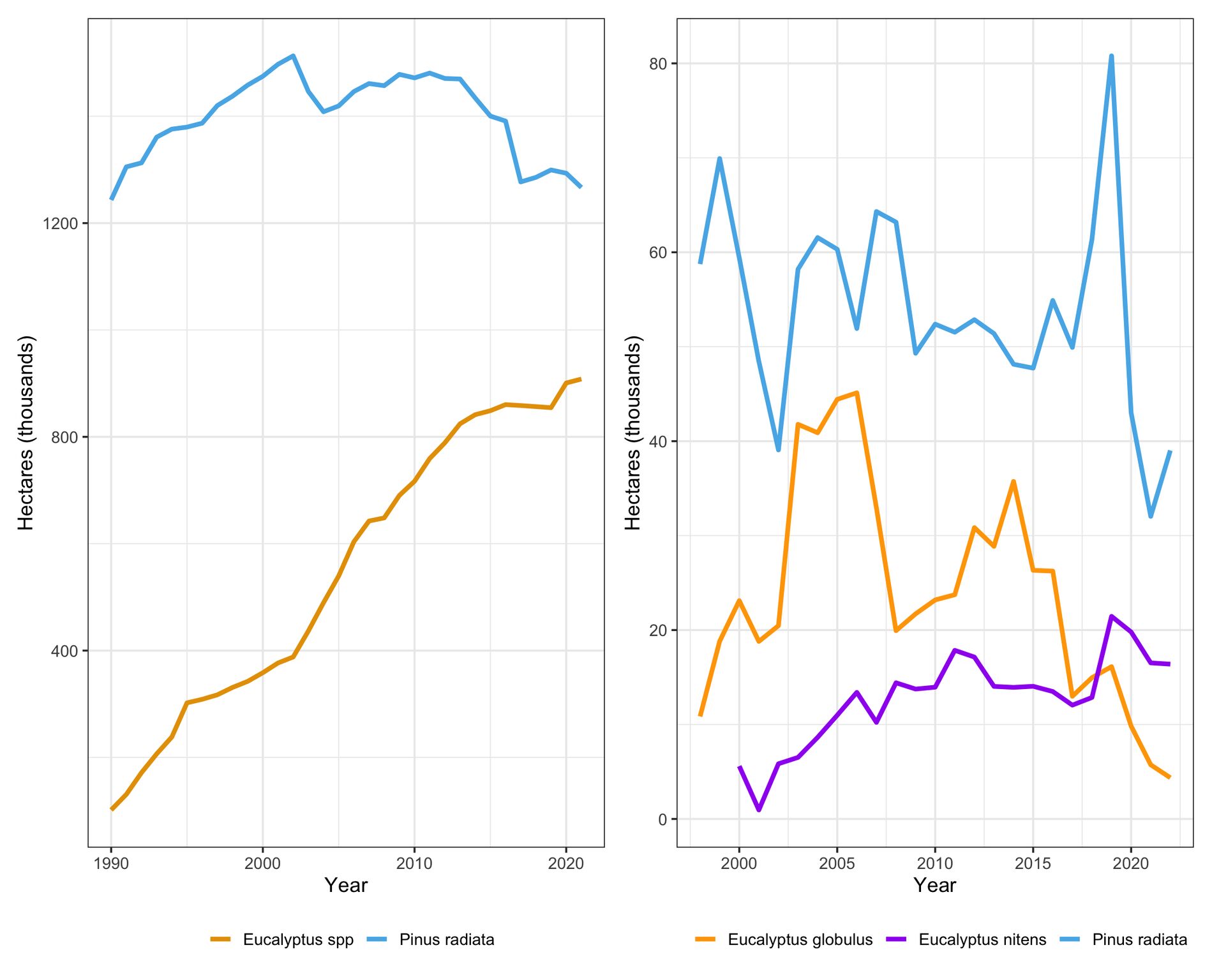The collapse of Eucalyptus globulus or future-proofing nonsense
I cringe every time I hear the term “future proofing”. It can be read as doing something to avoid facing the future or as doing something that will survive whatever the future brings. The first meaning is non-sensical, while the second is a fool’s errand.
When working in breeding (plants, animals, trees) it is unfeasible to cover all possible environmental and market futures. What we can do, however, is to embed variability and flexibility in the breeding programme, so we can better pivot under changing conditions. There is no guarantee that the crop will always survive the new conditions.
Why was I thinking about this? I’ve been contrasting the forestry plantations stories of Australia, Chile and New Zealand and in the previous post I pointed out the changing participation of Eucalyptus species in Australia and Chile.
In the Chilean case, the idea was to use Eucalyptus globulus—a high-growth & high-quality fibre species—for the short-fibre pulp industry. The expanding estate needed another species that, although with lower pulping quality, would cope with colder environments: E. nitens. After a few years there were some efforts to create the E nitens (mother) x E globulus (father) hybrid, with the aim of getting pulping quality closer to E globulus but with cold tolerance closer to E nitens.
For a few years the E globulus estate expanded substantially, until… a climate change-induced mega drought dramatically reduced forest productivity AND defoliation by Gonipterus platensis (with 4 generations per year) took its toll. Companies are now planting either E nitens or the E nitens x E globulus hybrid (some people call it gloni, for GLObulusNItens), which far outperform E globulus under the current abiotic+biotic environmental conditions.
The predicted “future” for 20 years ago was dramatically different from reality. There was no future-proofing in any meaningful sense, but there was variability and flexibility and good work to cope with a changing environment.
